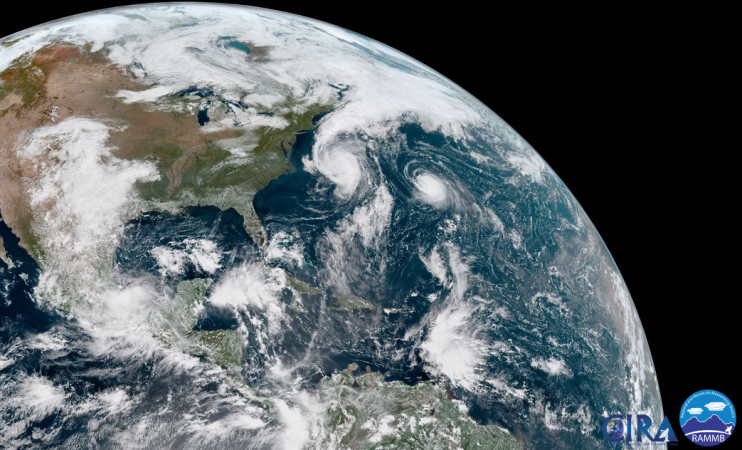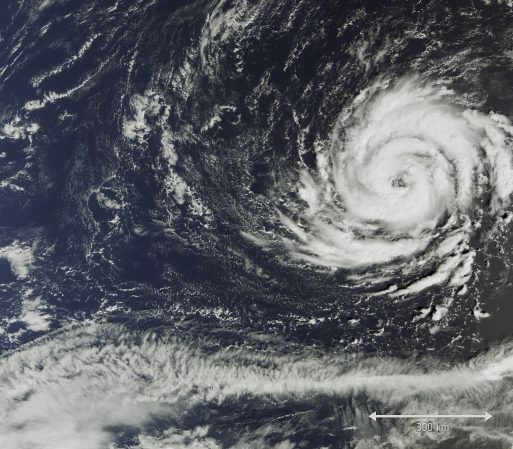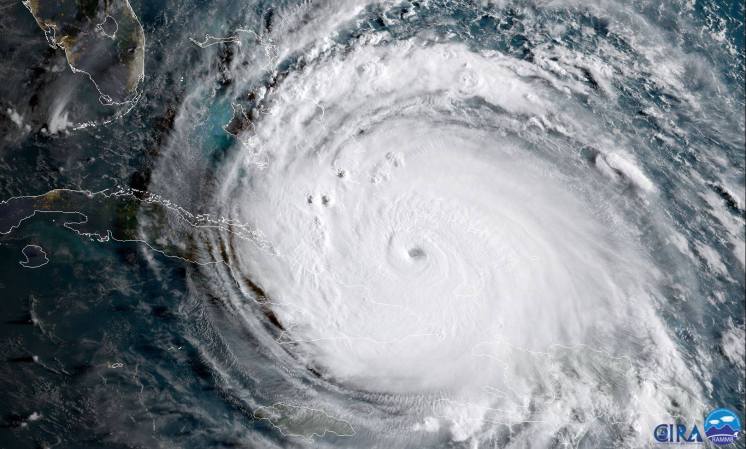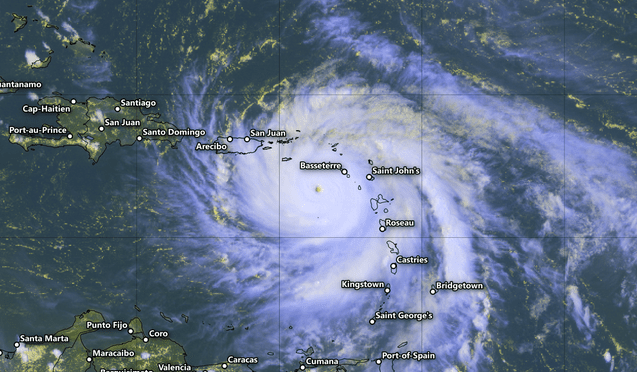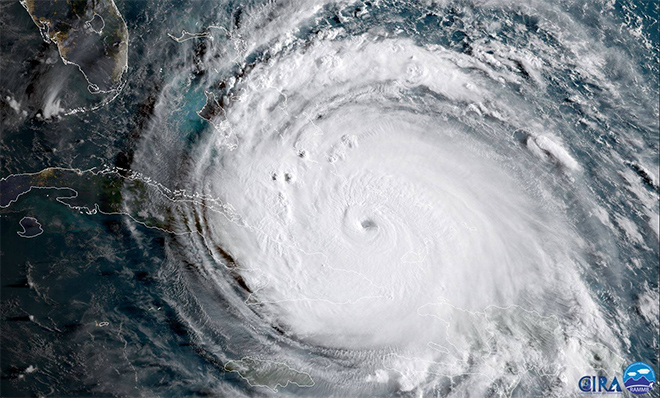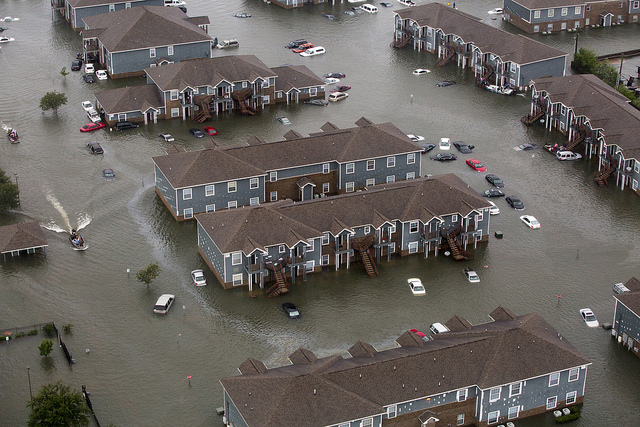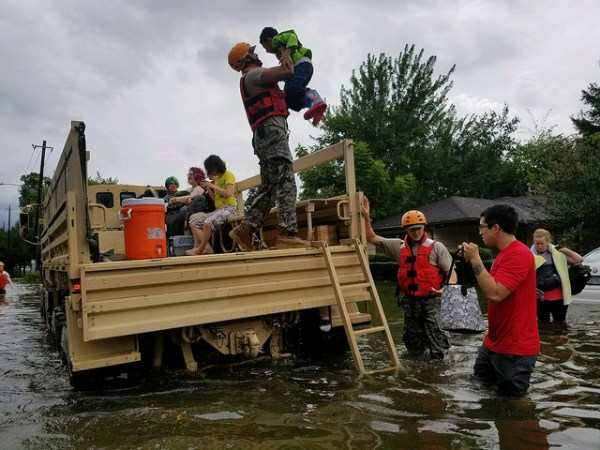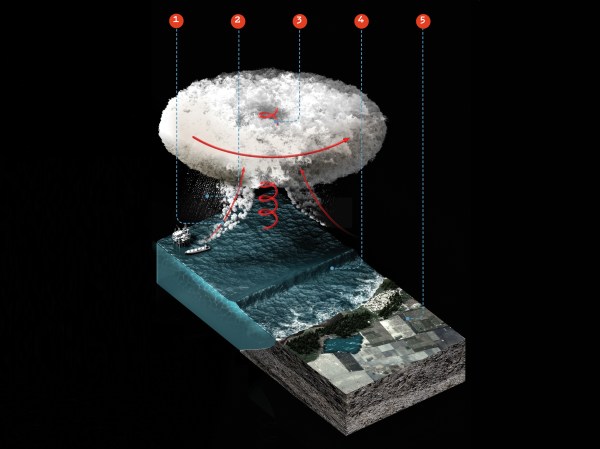


What makes a hurricane tick? Whether it’s a disheveled tropical depression or a picture-perfect category five swirling across the ocean like a buzzsaw, every tropical cyclone that forms on Earth has the same basic structure. These powerful storms are just as fragile as they are mighty, and there’s a fine line between atmospheric fury and a flimsy blob of harmless clouds.
Ingredients
Tropical cyclones—the catch-all term for tropical depressions, tropical storms, and hurricanes—require four key ingredients in order to form: existing thunderstorms, warm water, moist air, and light winds.
These storms feed off of the heat energy released by warm ocean waters, so they usually develop where sea surface temperatures are at least 80°F. There also must be ample moisture in the air to help the thunderstorms thrive. Winds around the storm have to be light so they don’t disrupt the system from taking shape. It’s rare that all of these conditions come together perfectly. But when they do, we can get historic storms like Hurricane Katrina or Hurricane Irma, which wreak havoc when they make landfall.

The spark
Every tropical cyclone starts from a cluster of thunderstorms. These thunderstorms can be triggered by anything from a potent disturbance moving off the western African coast to the tail-end of a cold front stalling out in just the right spot over the ocean.
Air rushing upward into a thunderstorm can leave lower air pressure at the surface. Surrounding air rushes in to fill the void and begins to rotate due to the Coriolis effect, creating the counterclockwise flow that makes a closed low-pressure system. The low-pressure center will get stronger as the thunderstorms get stronger, pulling more air up and away from the surface.
These newly-formed storms are usually called tropical depressions. A tropical depression’s winds are weak—less than 39 MPH—and they don’t look like much on satellite imagery. But tropical depressions often have potential to grow into something more, and they can still produce copious amounts of rain along their path.

The eyewall
If the environment is favorable, the thunderstorms in a tropical depression will begin wrapping around the center of circulation as the low-pressure center grows stronger and the thunderstorms themselves grow more potent. This formation allows wind speeds to grow stronger as well. A tropical cyclone strengthens into a tropical storm when its winds are between 39 and 73 MPH.
A tropical storm will quickly start to take on that classic look as it gains strength. Rain bands will develop and start spiraling around the storm. These bands act like elongated lines of storms, bringing heavy rain, damaging winds, and occasional tornadoes as they pass through an area. The bands will grow more intense and more frequent as the center of the storm draws closer.
The strong thunderstorms around the center of circulation eventually form into a feature known as the eyewall—the engine that powers a tropical cyclone. The strongest winds in a tropical cyclone are found in the northeastern part of the eyewall, where the storm’s forward motion adds to the momentum.
The eye
All of the air sucked up by thunderstorms in a cyclone’s eyewall has to go somewhere. The buildup of air at high altitudes creates an anticyclone, or a center of high air pressure. This anticyclone develops above the tropical cyclone, and acts like an exhaust pipe that helps filter air out and away from the storm. That helps the storm “breathe,” so to speak, and keeps it healthy. The anticyclone is also responsible for creating the sharp, spoke-like cirrus clouds that give a strong hurricane the appearance of a buzzsaw.
Some of that air ends up descending back down into the center of the storm, in an attempt to fill the great imbalance caused by the strong low-pressure center at the surface. This air warms up and dries out as it descends, creating the clear eye that makes these storms so easily recognizable from above. The eye of a storm can take on all different shapes and sizes. Some eyes are wider than entire islands, while some are just a couple of miles in diameter. As a storm grows stronger, its eye gets ever more defined.

How warm water fuels a storm
One thing that sets tropical cyclones apart from all the other storms on Earth is that they feed off of warm ocean waters. But how does warm water translate into a monstrous hurricane? One theory states that a hurricane’s strong winds help feed the storm heat from the ocean in a positive feedback loop. The heat helps make the storm stronger and, in turn, the stronger winds feed the hurricane even more heat from the warm ocean surface.
Warm water feeds hurricanes through latent heat release. The easiest way to visualize latent heat is to think of how you feel on the hottest summer day. Your first instinct after spending a long time outside is to lunge for a fan. It blows air across your sweaty skin, and the evaporating sweat helps cool you down. The sweat droplets absorb heat from the surface of your skin as they turn into water vapor—this is latent heat.
A similar process plays out at the ocean surface as a hurricane spins up. The WISHE theory states that strong winds generated by thunderstorms agitate the warm ocean surface and enhance evaporation. The evaporating water absorbs the sultry heat of the tropical ocean surface, and the water vapor travels up into the thunderstorms at the heart of the tropical cyclone.
This latent heat gets released into the atmosphere when the water vapor condenses back into water droplets, and it’s this process that feeds the thunderstorms the warmth of the ocean. The newly-warmed air quickly rises through the storm, helping the thunderstorms grow stronger. Stronger thunderstorms suck more air up into the atmosphere, causing even lower air pressure at the surface. The lower pressure helps make the winds even stronger. The stronger winds cause even more evaporation. The process continues until you have a powerful, beefy hurricane; in a perfect environment, a hurricane’s potential strength is only limited by the warmth of the water beneath the storm.
The ocean is often hostile
But perfect environments are rare. If it spins over an expanse of cooler waters, a storm will quickly start to fall apart. A tropical cyclone that ingests dry air will struggle and sputter out as its thunderstorms weaken and dissipate. Wind shear, the change in wind speed or direction over a short distance, is the death of many storms; most that have formed in the Atlantic Ocean over the past couple of years struggled so against wind shear that they died down within days. Strong winds will shred apart the thunderstorms at the center of a storm, or push the storms too far away from the center of circulation for the system to survive. In most cases, these factors will nip any would-be tropical cyclone in the bud. But of course, forecasters must remain vigilant for signs of those relatively rare—but potentially disastrous—exceptions.
